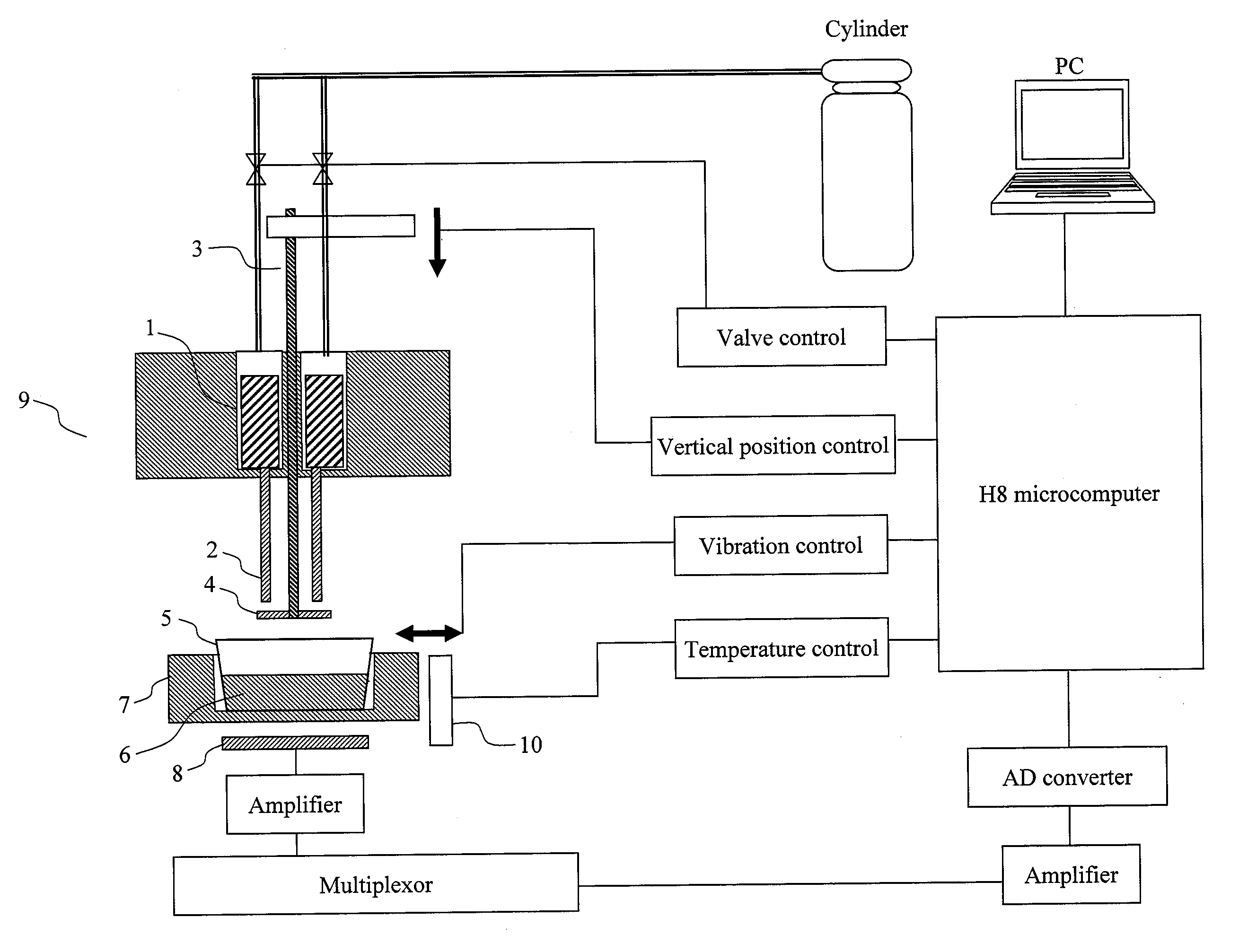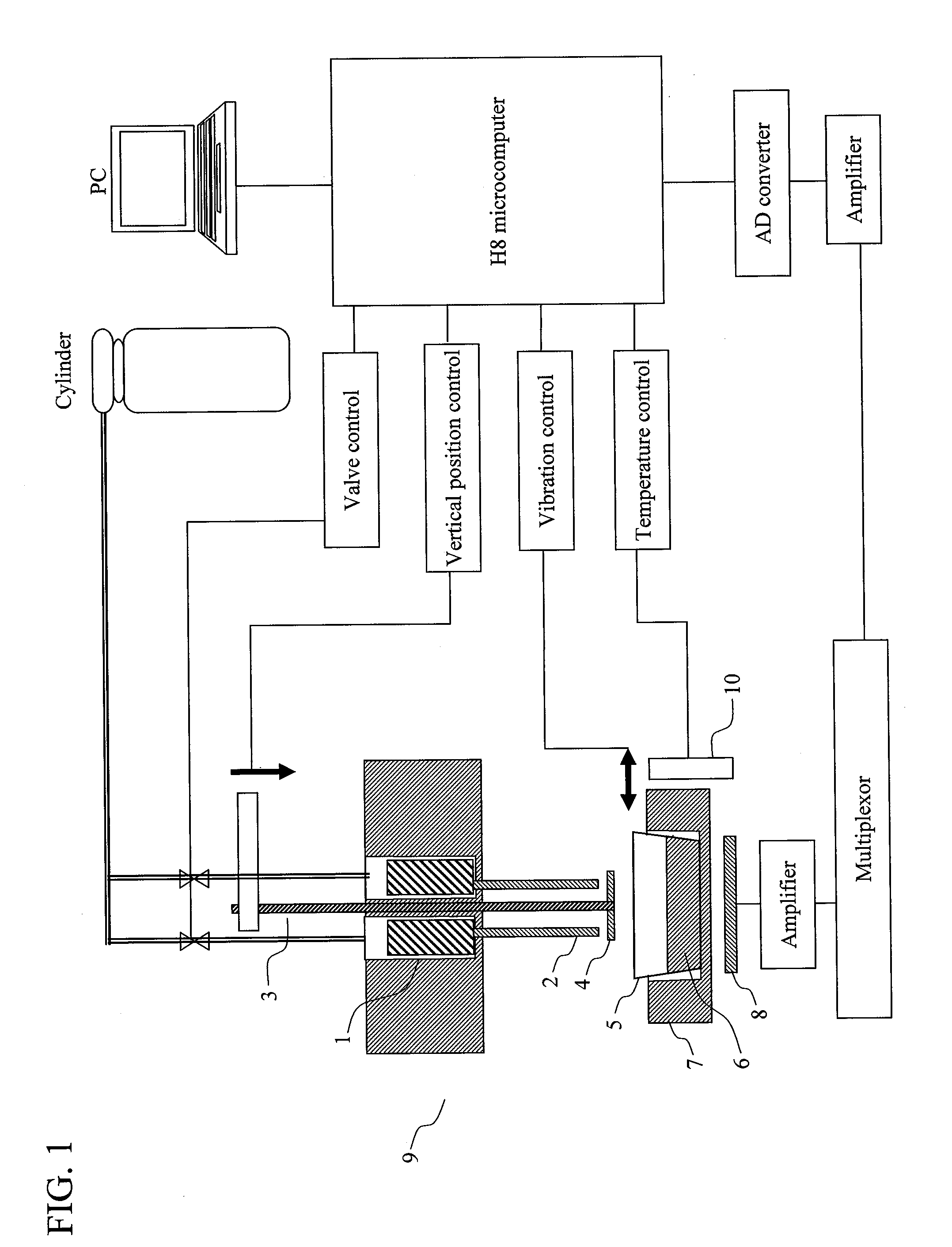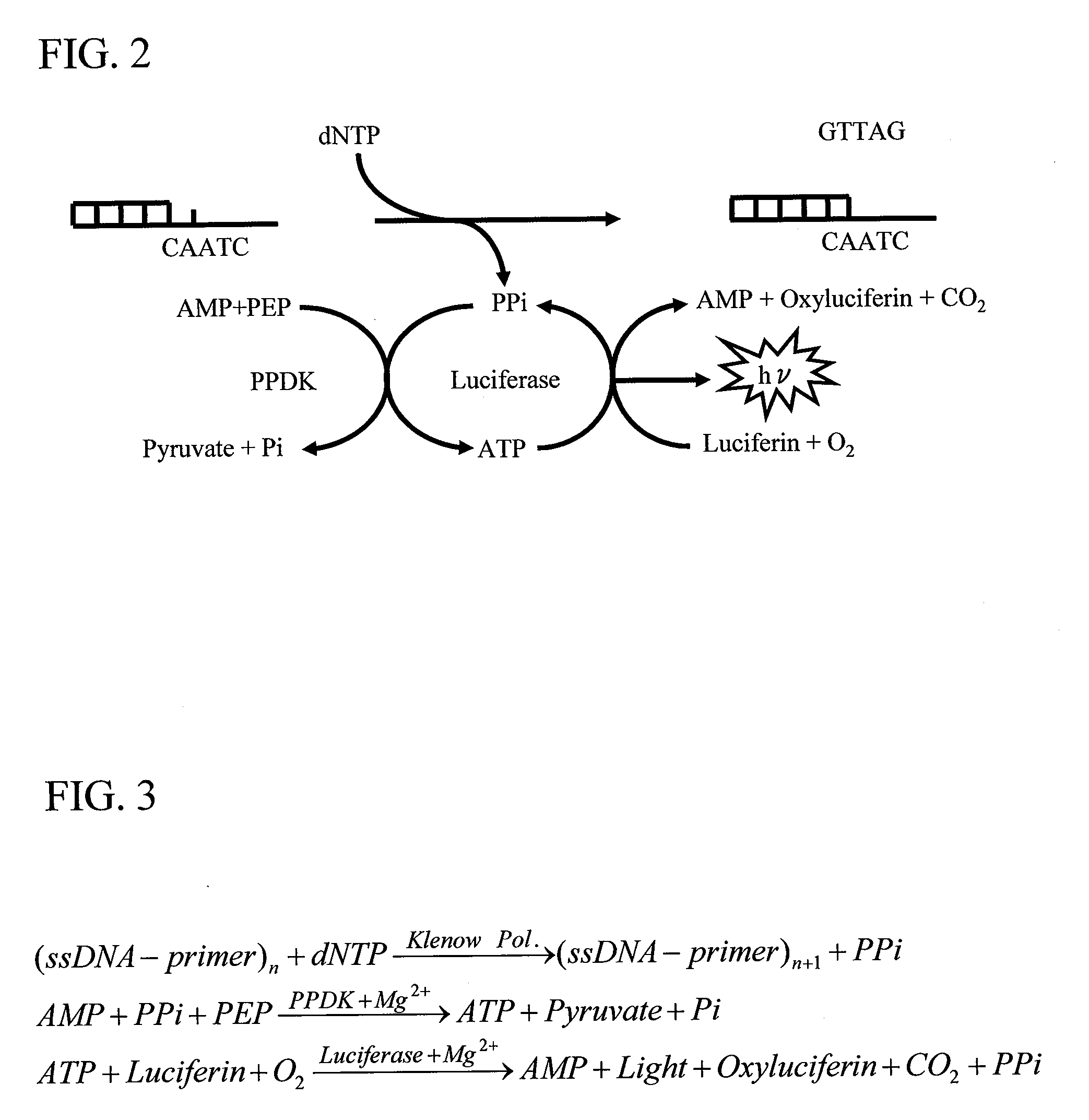DNA analysis apparatus
a technology of dna analysis and apparatus, applied in the field of dna analysis and genetic diagnostics apparatuses, can solve the problems of inability to dna sequencing, inability to sequence, and inability to perform dna sequencing, and achieve the effects of short time, high sensitive and accurate sequencing, and short tim
- Summary
- Abstract
- Description
- Claims
- Application Information
AI Technical Summary
Benefits of technology
Problems solved by technology
Method used
Image
Examples
example 1
[0074]The present Example relates to a method which comprises: attaching a DNA-immobilized membrane to a movable stage; moving up and down the movable stage such that DNA templates and reaction products are moved between a complementary strand synthesis position and a luminescence reaction position; and conducting DNA sequencing or DNA analysis. Various membranes such as filter papers and nylon filters can be used.
[0075]FIG. 2 shows reaction associated with pyrosequencing according to the present invention as well as the principle of the sequencing. FIG. 3 shows a process involved in luminescence reaction. Conventional ATP-producing reaction subsequent to complementary strand synthesis reaction utilizes ATP sulfurylase and APS. By contrast, the reaction system adopted here utilizes PPDK (pyruvate phosphate dikinase), AMP, and PEP (phosphoenolpyruvic acid). The present invention can be applied to both the reaction systems.
[0076]In pyrosequencing, primers are hybridized to target DNA....
example 2
[0094]In the first Example, the removal of redundant nucleic acid substrates was achieved by adding apyrase into the luminescence reaction solution. This removal can also be achieved by immobilizing apyrase onto a site, of a membrane, different from a DNA-immobilized site. Specifically, in the second Example, degradation reaction of redundant nucleic acid substrates subsequent to complementary strand synthesis reaction can be performed by immobilizing template DNA onto a central part of the membrane and immobilizing apyrase onto a peripheral part thereof.
[0095]FIG. 15 shows the outline of an apparatus of the present Example. FIG. 16 is a top view of the membrane. Template DNA is immobilized on a region 152 in a central part of a membrane 4, while apyrase is immobilized on a region 151 in a peripheral part that surrounds the region 152. Nucleic acid substrates are supplied to a region in an almost central part of the membrane from a dispenser. The supplied nucleic acid substrates are...
example 3
[0100]In the second Example, the apyrase that degrades redundant nucleic acid substrates was immobilized on the DNA-immobilized membrane or string. In the present Example, DNA and apyrase are each independently immobilized on membranes or strings, which are then superposed to achieve the function of degrading redundant nucleic acid substrates unused in complementary strand synthesis.
[0101]FIG. 18 shows the outline of an apparatus of the present Example. In the description below, membranes are taken as an example. A DNA-immobilized membrane 181 is superposed on an apyrase-immobilized membrane 182. These superposed membranes are placed in a movable stage 3. The DNA-immobilized membrane 181 is disposed in the upper part which is close to a dispenser 1, while the apyrase-immobilized membrane 182 is disposed in the lower part. Both the membranes may be superposed in advance for contact therebetween. Alternatively, a few seconds later from the supply of nucleic acid substrates, the space ...
PUM
| Property | Measurement | Unit |
|---|---|---|
| Time | aaaaa | aaaaa |
| Volume | aaaaa | aaaaa |
| Luminescence | aaaaa | aaaaa |
Abstract
Description
Claims
Application Information
 Login to View More
Login to View More - R&D
- Intellectual Property
- Life Sciences
- Materials
- Tech Scout
- Unparalleled Data Quality
- Higher Quality Content
- 60% Fewer Hallucinations
Browse by: Latest US Patents, China's latest patents, Technical Efficacy Thesaurus, Application Domain, Technology Topic, Popular Technical Reports.
© 2025 PatSnap. All rights reserved.Legal|Privacy policy|Modern Slavery Act Transparency Statement|Sitemap|About US| Contact US: help@patsnap.com



